The World’s First Open Heart Surgery
(And the Life-story of an American Black Doctor, 1883)
@Asim Deb
In July 1893, the young man James Cornish was stabbed in a neighborhood scuffle as a consequence of alcoholic brawl and was rushed to Provident Hospital with a one-inch knife wound in his chest near his heart. Surgery was the only option, but that was the time when medical professionals believed operating on the heart was too risk for anyone’s life.
Before the doctor on duty Dr. Daniel Hale Williams could administer any aid, Cornish had already collapsed due to loss of blood, and also the alcoholic effects. Even without support of x-rays, blood transfusions, or antibiotics to fight infections, even the operating theatre room had only crude anesthesia. However, Dr. Williams decided to operate, risking his surgical reputation. He called six doctors (four white, two black) and asked them to observe while he would operate. With six physicians witnessing the operation, he opened the patient’s chest cavity. Dr. Williams inspected the wound area between two ribs, exposing the breastbone. He cut the rib cartilage and created a small trapdoor to the heart. Underneath, he found a damaged left internal mammary artery and sutured it. Then, inspecting the pericardium (the sac around the heart) he saw that the knife had left a gash near the right coronary artery. With the heart beating and transfusion impossible, Williams rinsed the wound with salt solution, held the edges of the palpitating wound with forceps, and sewed them together. Dr. Williams had decided the heart muscle didn’t need sewing up, but he did suture the pericardium. It was a daring operation, but successful.
So, on the day of 9th July 1893, Dr. Daniel Hale Williams became the world’s first surgeon to perform a successful open-heart surgery, the first time a surgeon could successfully reach the chest cavity and surgically explored the heart. Fifty-one days later, the patient Cornish was released from the hospital. Completely recovered, the patient lived for another 20 years, outliving his surgeon by 12 years.
“He obviously was an inspiration for many physicians and a trailblazer,” said Dr. Ivor Benjamin, director of the Cardiovascular Center at the Medical College of Wisconsin and a past president of the American Heart Association. “We are really standing on the shoulders of giants. He is a giant not just for his own people, but for the entire medical profession.”
The achievement wasn’t Williams’ only pioneering move. Just two years earlier, he founded Provident Hospital and Training School for Nurses, the nation’s first Black-owned and operated hospital in America, treating both Black and white patients. It gave Black doctors and nurses an opportunity to practice medicine at a time when most medical and training facilities excluded them because of their race. He was also the first Black man appointed to the Illinois State Board of Health and was a charter member of the National Medical Association (NMA), the nation’s oldest and largest organization representing Black physicians. At a time when Black people were denied admission to white hospitals or relegated to all-Black wards with substandard care, the NMA made it a priority to eliminate health disparities and ensure access to professional medical care for all.
However, the early life of Williams was different, it’s an inspiring story. He was born in Hollidaysburg, Pennsylvania on January 18, 1856. His father died of tuberculosis when he was only 10 years old and family moved to Baltimore, Maryland to live with their relatives. At the age of 17, Daniel followed in the footsteps of his father and grandfather and became a barber. He also played bass violin on the side, but he quickly realized that neither profession was his calling. Daniel returned to his family barber shop. Ultimately Daniel decided to pursue his education. He studied law for a short time following his high school graduation. Then, at the age of 22, he became an apprentice with Dr. Henry Palmer, a highly accomplished surgeon. He graduated with an M.D. degree (Doctor of Medicine) in 1883 from the Chicago Medical College (now known as Northwestern University Medical School). His education was funded by Mary Jane Richardson Jonesm, a prominent leader of Chicago’s black community. Then he practiced medicine in Chicago at a time when there were only three other black physicians in Chicago (providentfoundation.org). He also worked with the Equal Rights League, a black civil rights organization active during the Reconstruction era.
That was an era when for any Black man in America to even have a medical degree was an accomplishment. In 1837, Dr. James McCune became the first Black man in the U.S. to earn a medical degree. He had to get his medical education in Scotland because American medical schools did not admit Black people. Ten years later, Dr. David Jones Peck became the first Black man to earn a medical degree from a U.S. institution, graduating from Rush Medical College in Chicago. Howard University created its own medical school in 1868 to train black doctors but their opportunities to practice medicine remained rare. In 1883, Dr. Williams was one of just three practicing Black doctors in Chicago at the time.
“I think that ultimately, Dr. Williams’ success and his recognition came not out of his race, but his accomplishments,” said Dr. Claudia Fegan, the Chief Medical Officer for the Cook County Health system, which includes Provident Hospital. “Though it closed for a time in the 1980s, Provident still serves the same mission Williams established at the time of its creation in the late 19th century”, she said.
In 1900, Dr. Williams became a visiting professor of surgery at one of the nation’s few Black medical schools, Meharry Medical College in Nashville, Tennessee.
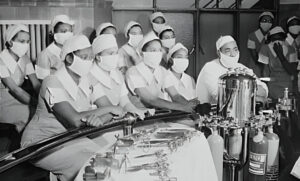 Provident Hospital students observing a doctor perform a mock operation in 1942. (Photo courtesy of the Library of Congress).
Provident Hospital students observing a doctor perform a mock operation in 1942. (Photo courtesy of the Library of Congress).
The example of Benjamin was also unique. The Guyanese man earned his medical degree in Scotland and performed the first blood transfusion in West Africa. “In my own life, I was not lacking for pioneers,” said Benjamin, who came to the U.S. after finishing high school in Guyana and was mentored by other leading figures in medicine who shared the challenges of an immigrant heritage. “I understand the value and importance of having these key individuals who, in spite of the odds, were able to be not just successful but first – and oftentimes best – in class.”
Williams was also responsible for advancements in the accessibility of health care to urban black citizens in Chicago, by opening Provident Hospital, the first interracial hospital in the United States, in 1891. Provident not only improved health care for black citizens but also provided training and staff opportunities for young black men and women interested in pursuing a vocation in the medical field. Later, as Chief Surgeon for the Freedmen’s Hospital in Washington, D.C., Williams improved the hospital’s organization and offered both training programs for nurses and staff opportunities for doctors.
Williams worked diligently on revitalization, improving surgical procedures, increasing specialization, launching ambulance services and continuing to provide opportunities for black medical professionals, among other feats. In 1895, he co-founded the National Medical Association, a professional organization for black medical practitioners, as an alternative to the American Medical Association, which didn’t allow African-American membership.
He died at the age of 73 at Idlewild, Michigan.
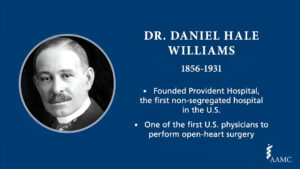
Source:
** Biography.Com, Encyc.com)
** https://www.heart.org/en/news/
** https://www.britannica.com/biography/
** https://www.biography.com/
** http://www.encyclopedia.com/people/medicine/
** https://www.jsums.edu/gtec/
********

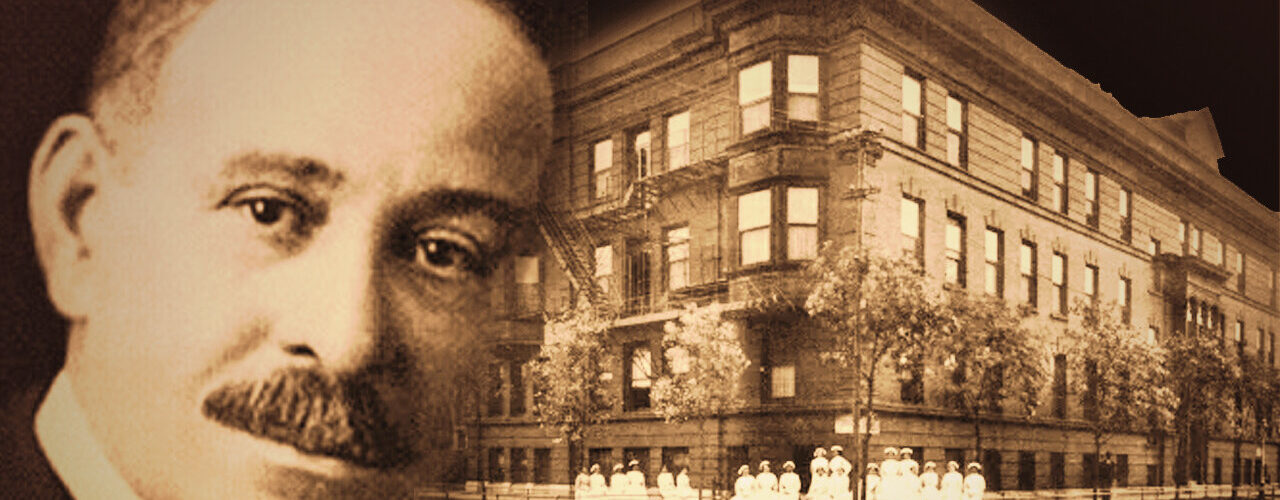
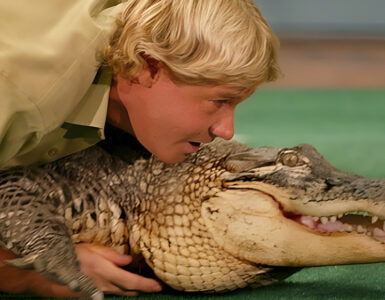
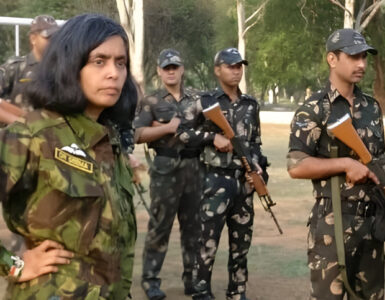
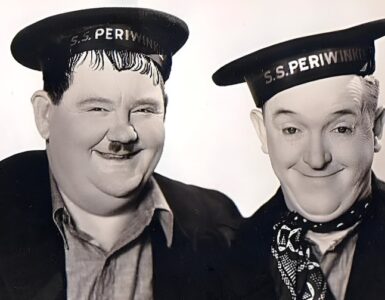









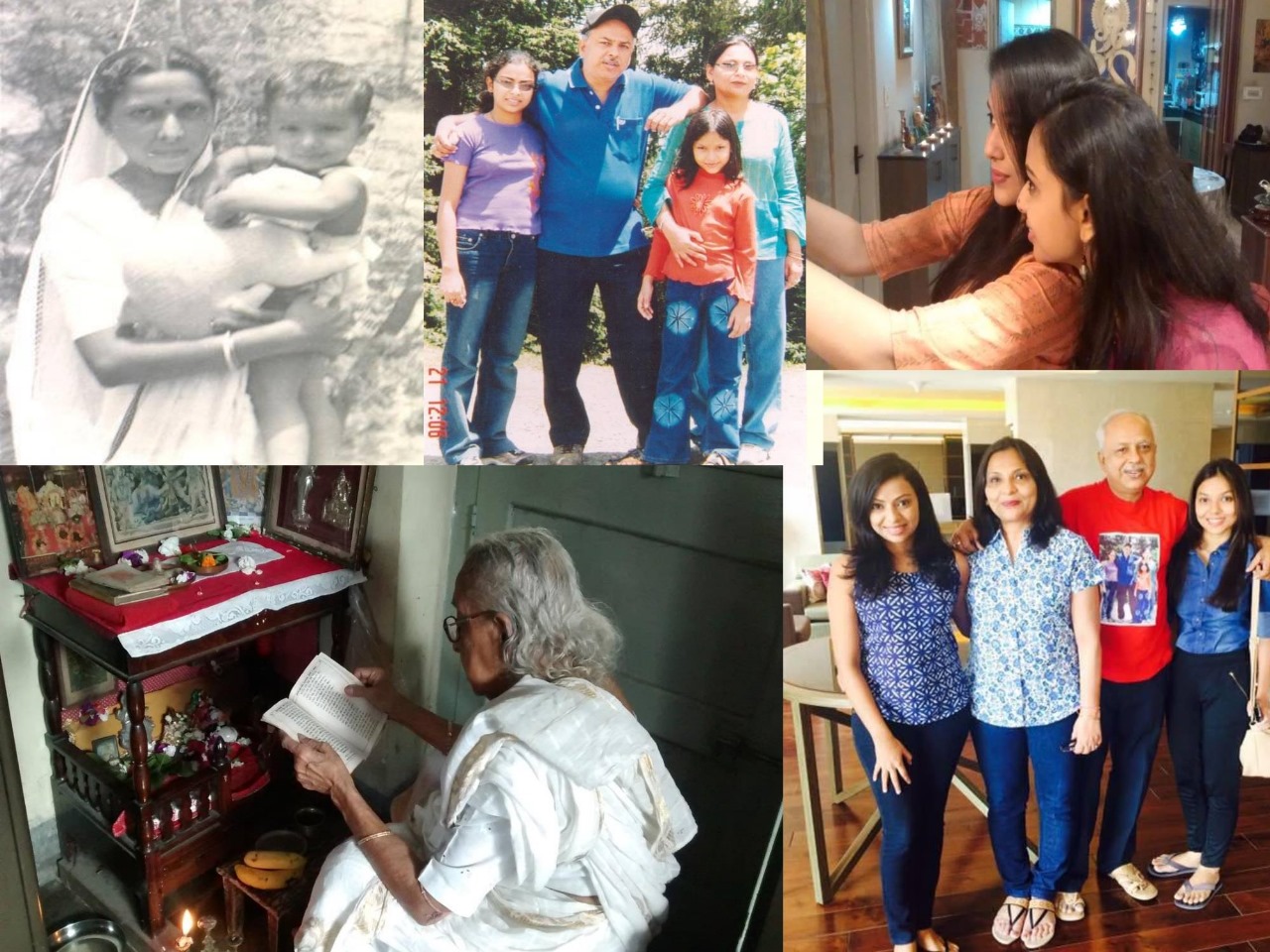
The world’s first open heart surgery was performed in 1893, which is unbelievable.
Thank you Asim, for extracting the pioneering performance of Dr. Daniel Hale Williams and present to us.
The world’s first open heart surgery was performed in 1893, which is unbelievable.
Thank you Asim, for extracting the pioneering performance of Dr. Daniel Hale Williams and present to us.
Thank you, Asim.
Nice to read.
It’s another glorious milestone by the black American community, when during those times higher education was a question for the black people of America. The article says there were only three black doctors in Chicago, this reflects the then society.
Dr. Williams as in this article was one of the pioneer in establishing the credentials of his community in the American history.
My sincere salute and respect for the Man.
On one side Dr. Daniel made impossible to possible showing his commitments for the common.
The other side tells how a community was a victim of deprive.
Thanks author for sharing the wonderful part of history.
আপনার থেকে আরও একটি ভালো প্রবন্ধ পেলাম।
কৃষ্ণাঙ্গরা অবহেলিত ও শোষিত হয়ে বহু বাধাবিপত্তির মোকাবিলা করেও সমাজের জন্য অনেক অনেক অবদান রেখেছেন, এই লেখাটি সেই বিষয়ের আরও একটি দলিল।
ডঃ দান উইলিয়ামস’এর জন্য আমার বিনম্র শ্রদ্ধা জানাই।
A very valuable part of medical history unknown to most of us . Thanks Asim for digging deep to enlighten people like me.
A very deep digging into medical history and enlighten people about this unknown part of history… thanks Asim
Excellent research of medical history… enlightened
I had heard / read about Dr. Williams and his struggled life and profession during those American days.
It is indeed great pleasure to know so much more about him from this article.
Thanks author.
আপনার আরও একটি ভালো লেখা পড়লাম।
চিকিৎসা সেবার সেই প্রাথমিক যুগে একজন বিনা প্রযুক্তির সাহায্যেই এত বড় একটি সাহসী উদ্যোগ নিয়েছিলেন। এবং সফল হয়েছিলেন।
আপনি খুব সহজ ভাষায় লেখাটি উপস্থাপনা করেছেন।
অনেক ধন্যবাদ ও অভিনন্দন।
What a wonderful story about black American doctor Daniel Hale Williams. It is a story of African blacks establised their right as citizen from the status of slavery . I read a book named ” Roots” by Alex Hailey which told how Africans were caught , arrested & brought to USA & other western countris huddled in a shop. Many of the blackmen were died during sea transportation due to sea sickness & unhealthy condition. They worked hard many generations before emancipated to citizens througjh constititution amendment after civil war led by President Abraham Lincon. The slaves titles were given as their masters’ title. Their religion were that of their masters. They had many struggles to become equal citizens of country. It is matter of great pride that they contributed greatly in every sphere fighting against many odds.
Thank you Asim for sharing great story of a black doctor who did open heart surgery in 1893. In India open heart surgery started in 1961.
Thanks so much for such a comment that encourages me to write more.
Dr Williams সমন্ধে জানতে পেরে খুবই ভালো লাগলো। সত্যি এই ঘটনা জানা ছিলো না। তখনকার দিনে একজন কৃষ্ণঙ্গ কে কতোটা প্রতিকূল পরিস্থিতিতে কাজ করতে হতো সেটা বোঝা যায়। তারমধ্যে মেডিকেলের মতো এতো উচ্চ মানের প্রফেশনে তারমতো একজন কৃষ্ণঙ্গ যে নিজেকে ওতো উচ্চ স্থানে পৌঁছে দিতে পেরেছে সেটা তার প্রকৃত মেধা আর পরিশ্রমের ফসল। এইরকম মহান ব্যাক্তিরাই বিভিন্ন কালে বিভিন্ন দেশে তাঁদের কর্মকান্ডের দ্বারা ভবিষ্যৎ কে উজ্জ্বল করার চেষ্টা করে গেছেন আর আমরা সারা পৃথিবী তে এনাদের মতো মহা পুরুষদের অক্লান্ত পরিশ্রমের ফসল পেয়ে চলেছি। আমার আন্তরিক শ্রদ্ধা এই মহান ডাক্তার এর প্রতি রইলো। লেখককেও শুভেচ্ছা জানাই এইরকম এক অজানা ঘটনা আমাদের সামনে উপস্থিত করার জন্য।👏🏽👌🏽❤
Thanks Asim for narrating an inspiring story of a world renowned surgeon , his early life , career achievements.
It is is not color or creed, but it is his extra ordinary talent, perseverance, firm willingness, risk judgement and, of course, availing right opportunity at right time that helped him to achieve great success and reach to the top.
This story is very close to my heart for so many reasons.
Colour prejudice and community profiling are very common in every society, be it USA or India. That’s why the courageous endeavor of Dr. William, heart surgery with minimal equipment, stands alone
Had he failed his professional competence career would have been put on an anvil. Just because he was black.
Even in this century we had to witness a movement like Black Lives Matter.
However, the heart of Dr William Had been in the right place. To save a human life he did not hesitate to take the risk of losing everything.
This is the forward march of humanity which does not recognize any barrier.
পড়লাম ভাই। জানলাম কিছু কথা। এর বেশী মতামত দেবার যৌক্তিকতা আমার নেই। লেখাটা একটু ভিন্ন স্তরের। তুমি পাঠিয়েছ বলেই পড়লাম।
This Can be redefined as a gallant story of bravery otherwise. The guts which Dr Daniel demonstrated is simply exemplary, with limited resources or no resource he went on with the intervention which arguably should go down the historical timeline as the most courageous effort by a doctor in saving a patient’s life. He kept his cool and we can see that he involved six doctors just to watch him in the field all alone ; and mind it not assisting him so that they can point out any flaw which Dr Daniel could have committed in the course of surgery and immediate corrective action could be adopted. Dada, best wishes for you, carry on with your quest of this planet
Another interesting real story, found out, through painstaking research and well written, with all required informations.
Someone dares to do something novel, thus civilization gets a thrust to leap forward.
This is true for every sphere of our life.
Dr. Williams was such a pioneer.
Unbelievable! An open heart surgery in 1893 when medical equipment and antiseptic medicines were just primitive and even so done by a black, of all people. Dr Daniel Hale Williams, you deserve a place in the annals of medical history, if not already done. Asim, thank you for bringing out this fact for us who thinks modern medical science started with the penicillin.
Nice one to read.
Author has beautifully described the socio obstacles of black American people that had disturbed the human healthcare too. Any praise for Dr. Williams is not enough. My best tributes for the noble soul.
মানুষের কলজে নিয়ে একটা লেখা। সেই লেখার ওপরে আবার লেখা!
কলজের জোর থাকা দরকার। জোর টা মনের মধ্যে আনতে গিয়ে জেরবার হয়ে গেছি। আমার সব জারিজুরি শেষ হবার মতো অবস্থা
Dr. Daniel Hale Williams কে সশ্রদ্ধ প্রণাম। তাঁর সাহসিকতা ও কাজের প্রতি নিষ্ঠা ই তাঁকে এই সাফল্য এনে দিয়েছিল। পরবর্তি কালে তাঁর আদর্শে অনুপ্রাণিত হয়ে আরো অনেক ভাল ডাক্তার তৈরি হয়েছে। সেই সময়ের কথা বিবেচনা করে ভাবলে এটা অবিশ্বাস্য মনে হয়, পিছিয়ে পরা মানুষেরা চেষ্টা দিয়ে অনেক দুর অবধি যেতে পারে।
লেখকের লেখা সত্যিই ভাল হয়েছে এবং চিকিৎসা জগতের সেই সময়কার একটা সামগ্রিক চিত্র পাওয়া যায়।
কৃষ্ণাঙ্গদের মেধা কে যদি নানান সামাজিক অত্যাচারে দমন করা না হতো, তাহলে এই পৃথিবী হয়তো আরও অনেক উপকৃত হতো।
আশ্চর্য লাগে যখন ডক্টর উইলিয়াম সার্জারি করছেন, তিনি একাই করছেন, কোন একজনও সহযোগী নেই!! এ ভাবা যায়??
ডক্টর উইলিয়ামকে আমি বলবো একজন তপস্বী যিনি চিকিৎসা পেশাকে মানুষের সেবায় উৎসর্গ করেছিলেন।
লেখাটির গ্রন্থনা খুব ভালো লাগলো।